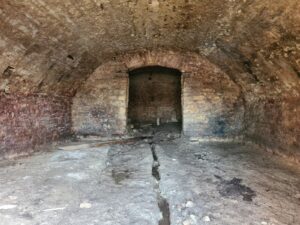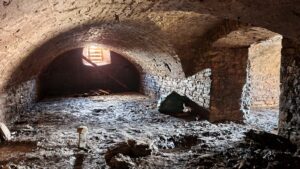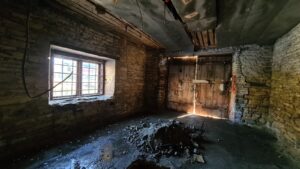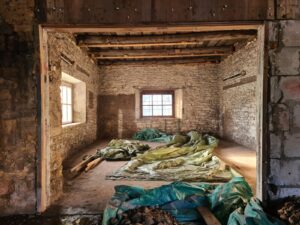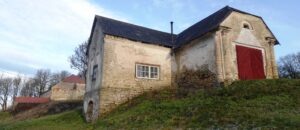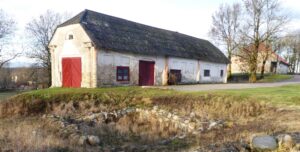The history of the town of Lihula, located in the Lääneranna Municipality in Estonia, goes back centuries, with an ancient stronghold dating from approximately the 12th century. During the Livonian Crusades, i.e. the ancient Estonian fight for freedom, Lihula became known as a stronghold and an important centre in the western part of Estonia (Läänemaa) and further. Lihula had all the prerequisites for becoming the capital of Estonia. Unfortunately, that was not to be the case. The stronghold changed hands on several occasions, being the property of either Swedes or German conquerors. During the Livonian War the castle was seriously damaged and it was never restored. In the 17th century, Lihula Manor began evolving next to the remains of the stronghold. Throughout its existence it has been the property of several Baltic-German noble families. The magnificent two-storey stone classicist main building still stands, as do a number of other buildings that belong to the ensemble: the large granary, the liquor storehouse, the stables and coach-house, the Dutch-style windmill, several workers’ lodgings, and the remains of the old distillery. The Castle Hill is popular among the local inhabitants as a venue for various events.
The remains of the Bishop’s Castle and the entire manor ensemble together with the old part of downtown Lihula make up the oldest settlement heritage protection area of Lihula with its preserved historical milieu and examples of the local building tradition. The manor currently houses the Lihula Museum. There are plans to turn the granary (which also functioned as a forge until the late 1930s) into a restoration workshop staffed with builders and handicraftsmen specialising in traditional building techniques. Their main task would be to provide guidance on restoration and carry out custom building projects, offer training in the maintenance and restoration of old windows, doors, rainwater drainpipes etc. The workshop would be open to visitors and tourists who would be able to observe how metal roof sheets and drainpipes are formed, rusty forged iron elements and other ironware are cleaned, and wooden items are restored. The handicraftsmen and master builders would service the entire manor ensemble (the museum) as well as the buildings located within the heritage protection area. The granary would be fully in public use.
The historical liquor storehouse with architectural value is currently unused and as such may begin to fall apart in the future. Our primary goal is to restore the building to preserve its original form. The second goal is to give additional value to the building, which would contribute to the preservation and restoration of the historical settlement of Lihula. The socio-economic aim is to establish a restoration workshop in the building, providing employment primarily to local handicraftsmen and master builders and spreading knowhow in traditional building materials and restoration techniques through training courses that could also include guest tutors from outside.
Opening a handicrafts workshop is bound to enhance employment, develop entrepreneurship and inspire local landlords to renovate their houses using traditional methods. In addition, it will create better conditions for appreciating local heritage culture, passing handicraft skills on from master to apprentice, and strengthening social cohesion between Lihula Manor and downtown Lihula. All the above will have a positive effect on the local community and the tourism sector: the number of tourists coming to visit Lihula’s stronghold, the manor complex and the museum will increase, contributing to an additional influx of finances into the area.
Photos of the situation and state of repair as of January 2022:

